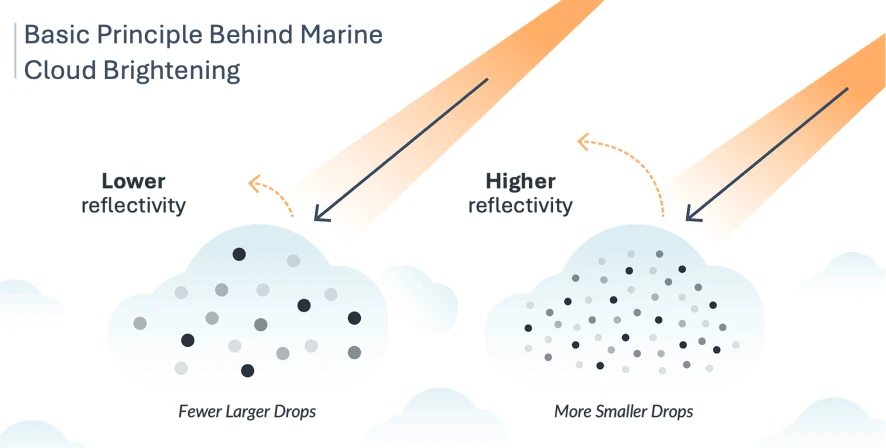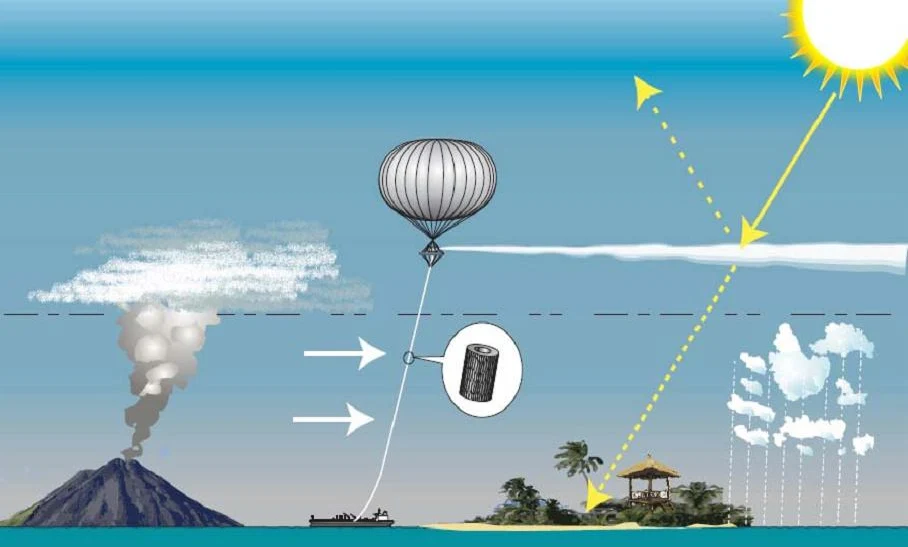As global temperatures continue to break records, the world is increasingly turning its gaze towards solar geoengineering, a controversial set of technologies aimed at cooling the Earth by reflecting sunlight back into space. This method, known as solar radiation modification, includes various techniques under its umbrella, each with its potential impacts and benefits.
The Push for More Research on Solar Engineering Amid Rising Heat
2023 saw the White House announce a plan to intensify research into two prominent solar geoengineering methods. This initiative highlights a growing urgency to explore scientific solutions capable of moderating the Earth’s escalating temperatures. However, solar geoengineering remains a contentious topic among scientists, policymakers, and global communities, mainly due to concerns about its wide-reaching implications on weather patterns, water cycles, and agricultural productivity.
A Call for Inclusive and Global Research
The necessity for a broad, inclusive research approach is advocated by Shuchi Talati, founder of The Alliance for Just Deliberation on Solar Geoengineering. Her organization seeks to expand the dialogue on solar geoengineering beyond dominant voices like the United States, reaching out to communities in the Global South that are disproportionately affected by climate change. Talati stresses the importance of involving scientists from diverse regions and backgrounds to address specific local and global environmental challenges.

Criticism and Legislative Responses
Despite increased interest in research, the prospect of researching solar geoengineering is met with significant skepticism. Critics worry that even exploratory research could make deployment of these technologies more likely, prompting preemptive legislative actions. In 2022, more than 60 climate scientists worldwide called for an international agreement to halt solar geoengineering pursuits.
Meanwhile, some U.S. states, including Tennessee, have considered making it illegal to release substances intended to alter weather patterns or sunlight intensity, especially after the flooding in Dubai.
Field Investigations into Future Solutions
Amidst this backdrop of debate and legislation, field investigations are being conducted to explore practical applications of solar geoengineering. Currently, there are two major methods being toted around: marine cloud brightening and stratospheric aerosol injection. Both aim to reflect sufficient sunlight to lower global temperatures effectively.
Of course, the global community remains divided on the path forward, balancing the urgent need for solutions against the ethical, environmental, and geopolitical implications of manipulating the Earth’s climate.
Marine Cloud Brightening
The concept of marine cloud brightening holds a unique place within the broader scope of solar radiation modification. This approach draws from natural phenomena inadvertently triggered by human activities, like emissions from ships, which have been affecting the Earth’s radiation balance for over a century.
From Ship Tracks to Cloud Brightening
According to Sarah Doherty, program director of the Marine Cloud Brightening Project and an associate professor at the University of Washington, the impact of ships on cloud formation has been observable for some time. “You can see where ships go over the ocean. The sulfur they’re producing from their engines produce small particles in the atmosphere and often leave brightened cloud streaks—we call them ship tracks,” Doherty stated. Her project aims to mimic this effect, but with a cleaner twist: using sea salt to create “clean ship tracks.”
Pioneering Research in Action
The University of Washington, in collaboration with the nonprofit organization Silver Lining, has initiated an unprecedented outdoor study to delve deeper into how marine cloud brightening could feasibly operate on a larger scale. This study involves dispersing fine particles of salt water into the air and monitoring the resulting sea-salt aerosol plume with sophisticated research instruments as it ascends through the atmosphere.
The goal is to enhance stratocumulus clouds by introducing perfectly sized sodium molecules that attract more water vapor, forming new droplets and consequently brightening the clouds. This increased brightness helps reflect more sunlight away from Earth, potentially lowering temperatures in targeted areas.

The Long Road to Application
Despite the promising initial studies, Kelly Wanser, executive director of Silver Lining, emphasizes the nascent stage of this technology. “This technology is still really far from being a full-scale, operational technology and would likely cost billions of dollars to research and develop,” Wanser noted. The dual benefit of this research lies not only in its potential to mitigate climate effects, but also in its ability to enhance our understanding of atmospheric aerosols and pollution.
As scientists continue to explore and refine marine cloud brightening, the technology represents a hopeful yet challenging frontier in the ongoing effort to combat global warming. This method, still in its infancy, requires substantial investment and continued scientific inquiry to determine its viability as a sustainable climate intervention tool.
Stratospheric Aerosol Injection
While marine cloud brightening focuses on localized impacts, stratospheric aerosol injection proposes a broader approach to tempering Earth’s rising temperatures. This method has garnered attention from researchers and governments alike as its potential global impact becomes more evident.

The Science and Promise of Stratospheric Aerosol Injection
David Keith, a leading researcher and professor in the Department of the Geophysical Sciences at the University of Chicago, has been a prominent voice in studying stratospheric aerosol injection. He explains that introducing sulfur into the stratosphere could significantly counteract the warming effects of carbon dioxide by reflecting sunlight away from Earth. However, Keith emphasizes that this method isn’t a standalone solution, but part of a broader strategy that includes cutting emissions and eventually removing carbon from the atmosphere.

Commercial Ventures and the Urgency of Action
Amidst growing concerns over the pace of climate change, some private entities are exploring more immediate applications of solar geoengineering. Make Sunsets, co-founded by Luke Iseman and Andrew Song, offers a novel “cooling credit” system where customers fund the release of sulfur dioxide into the stratosphere. Using balloons filled with sulfur dioxide and helium, the company aims to replicate the cooling effects observed after volcanic eruptions.
Though the total amount of sulfur dioxide introduced by Make Sunsets has been minimal, the founders view their efforts as a crucial initial step toward larger-scale geoengineering solutions. We’ve done such a poor job of geoengineering our climate with carbon emissions that now we need to geoengineer in a positive direction to offset that,” Iseman stated.

Balancing Innovation with Caution
As interest in solar geoengineering grows, the scientific community remains cautious, emphasizing the need for thorough research and understanding of potential impacts before any large-scale implementation. The debate continues over the balance between taking swift action and ensuring well-informed, responsible interventions in Earth’s climate system.
The Path Forward in Solar Geoengineering
The dialogue around solar geoengineering is heating up as the planet continues to warm. With technologies like marine cloud brightening and stratospheric aerosol injection at the forefront, the world faces a critical decision point. The potential of these technologies to significantly alter the global climate underscores the importance of robust research and inclusive discussions to fully understand their implications.
As we stand at this crossroads, the future of solar geoengineering will likely shape our approach to global warming, highlighting the delicate interplay between human innovation and the natural environment.
More To Discover
The journey towards implementing these technologies is not just about cooling the Earth, but also about steering our collective environmental destiny with foresight and responsibility.



















